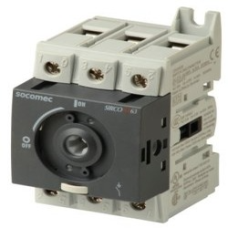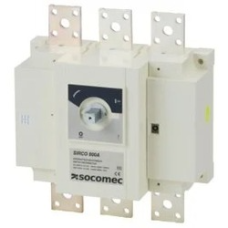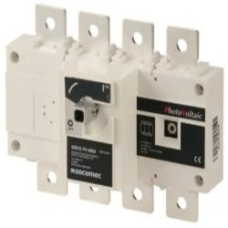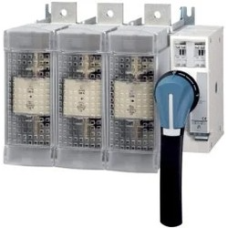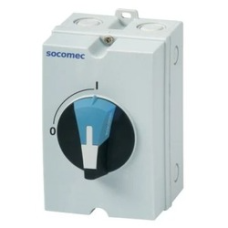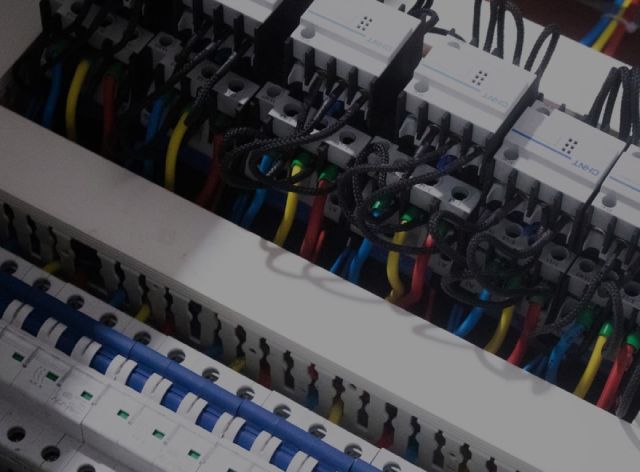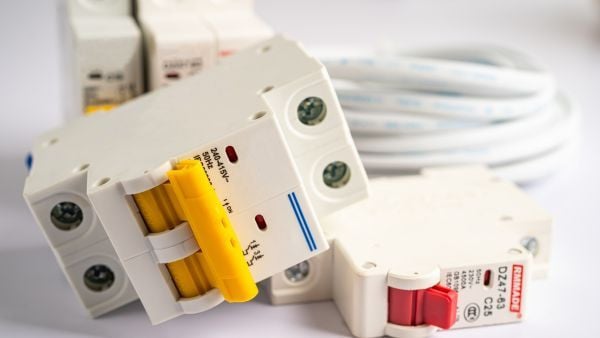The disconnect switch – also called an isolator switch or load break switch – is an essential safety device in any electrical installation.
Its main function is to electrically isolate a circuit, allowing safe maintenance or repair work, while ensuring a visible break in the current flow.
Unlike a circuit breaker, which provides protection against overloads and short-circuits, the disconnect switch does not offer active protection. Its role is purely to isolate part of the circuit, making operations safe for technicians.
What is a disconnect switch and what is it used for?
An electrical isolator switch operates as a mechanical switching device.
- In the closed position, current flows normally.
- In the open position, it interrupts the flow of current and physically separates the contacts, ensuring total and visible isolation.
This function is critical in:
- industrial installations,
- commercial and tertiary buildings,
- photovoltaic installations (where DC circuits must be safely disconnected),
- certain domestic applications requiring enhanced safety.
The different types of disconnect switches
AC load break switches
Designed to cut and isolate alternating current (AC) circuits, typically found in industrial and commercial electrical systems.
DC disconnect switches
Essential for photovoltaic systems and energy storage applications. They are designed to safely interrupt continuous voltages up to 1500V DC.
Enclosed disconnect switches
Housed in a plastic or metal enclosure, these models are commonly used as emergency shut-off switches or in outdoor environments.
Modular (DIN rail) switches
Compact and easy to install, they fit directly into an electrical panel or distribution board.
Key selection criteria
When selecting the right disconnect switch for a given application, several technical parameters must be considered.
Rated voltage (Ue)
This is the maximum voltage the device can withstand under normal operating conditions.
Example: for a 400V power supply, choose a disconnect switch rated for 400V or higher.
Rated current (In)
The maximum continuous current the device can carry without overheating or being damaged.
Ensure that the installation’s current demand (e.g., 25A, 125A, 1000A) is compatible with the device.
Number of poles
Defines how many independent circuits can be controlled by a single device. Typical configurations include:
- 1 pole: simple single-phase circuits.
- 2 poles: single-phase with neutral or two-phase circuits.
- 3 poles: three-phase without neutral.
- 4 poles: three-phase with neutral.
Breaking capacity (Icu)
The maximum fault current the disconnect switch can interrupt without being damaged.
This is particularly important in applications where short-circuits may occur, as it ensures the device can safely interrupt the current.
Operating environment (indoor or outdoor)
The conditions of use will influence the choice of device:
- IP rating: high protection rating (e.g., IP65 or IP66) for dust and water resistance.
- Weather and UV resistance: critical for outdoor installations.
- Mechanical robustness: resistance to vibration and impact.
Example: photovoltaic installation
For a 10 kW solar installation operating at 400V with a rated current of 25A, the suitable disconnect switch should have:
- a rated voltage ≥ 400V,
- a rated current ≥ 25A,
- sufficient breaking capacity for potential short-circuits,
- an IP65 enclosure to withstand outdoor conditions.
This ensures a safe and compliant disconnection system.
Optim-Elec’s range of disconnect switches
Socomec switches
- SIRCO M (16 – 125 A): compact, modular, available in 1 to 4 poles.
- SIRCO (125 – 3200 A): robust models for industrial applications.
- SIRCO PV (100 – 3200 A): optimized for photovoltaic installations.
Telergon switches
- S3 AC Series: enclosed AC disconnect switch, up to 690V – 20A, IP66, compliant with IEC 60947-3.
- F1 DC Series: designed for DC applications up to 1500V – 32A, with multiple mounting options.
- F7 DC Series: modular, configurable from 2 to 10 poles, up to 55A, IP66, compliant with IEC/EN60947-3 and UL508i.
These ranges meet the needs of industrial, commercial, and photovoltaic electrical systems.
The Optim-Elec range
The disconnect switch (load break switch) is a central element of any electrical installation, ensuring operator safety and compliance with international standards.
The selection must be based on:
- rated voltage,
- rated current,
- breaking capacity,
- number of poles,
- and the operating environment.
At Optim-Elec, we offer a complete selection of Socomec and Telergon disconnect switches, designed to meet the needs of professionals in electrical engineering, industry, and photovoltaic systems.
Frequently Asked Questions
Read More
Read More
Read More
Read More


